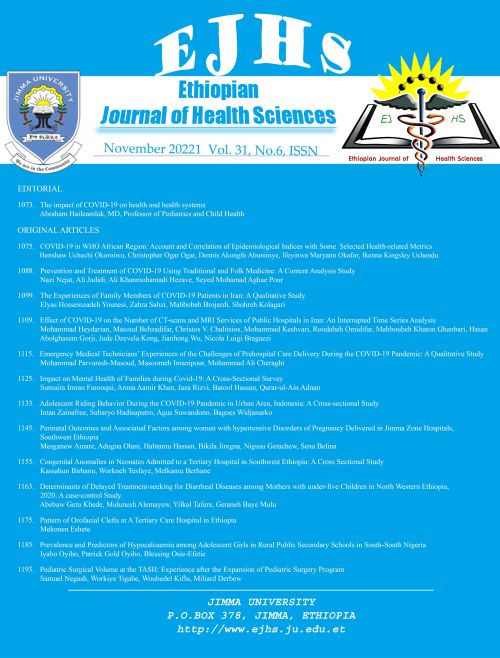Main Article Content
Congenital Anomalies in Neonates Admitted to a Tertiary Hospital in Southwest Ethiopia: A Cross Sectional Study
Abstract
BACKGROUND፡Congenital anomalies affect 2-3% of all live births. Anomalies of the central nervous system account for the highest incidence followed by that of the cardiovascular and renal systems. There is scarcity of data in developing countries like Ethiopia. The aim of the study was determining the magnitude and type of congenital anomalies and associated factors in neonates admitted to the neonatology ward of Jimma Medical Center, Southwest Ethiopia.
METHODS: Institution based cross sectional study was done from March 1 to July 30, 2020. A total of 422 mother-infant pairs were enrolled into the study. Structured questionnaires were used to capture the socio-demographic, obstetric and medical characteristics of the mothers, demographic characteristics of the infants and type of congenital anomalies. Univariate and multivariate logistic regression analyses were done and results are presented as narratives and using figures and tables.
RESULTS: Closer to one in five neonates admitted to the neonatology ward (78, 18.5%, 95%CI 14.7-22.3) had congenital anomalies; the majority (59, 13.98%) having only one type of anomaly. Anomalies of the nervous system (29, 6.87%) and gastrointestinal system (24, 5.68%) accounted for the majority of
the cases. Inadequate antenatal care follow-up (p=0.018, AOR=1.9, 95%CI1.115, 3.257) and lack of folate supplementation during pregnancy (p=0.027, AOR=2.35, 95%CI 1.101, 5.015) were associated with congenital anomalies in the neonates.
CONCLUSION: Congenital anomalies account for significant number of admissions. Significant association was seen between neonatal congenital anomalies and poor antenatal attendance and lack of folic acid supplementation during pregnancy.






